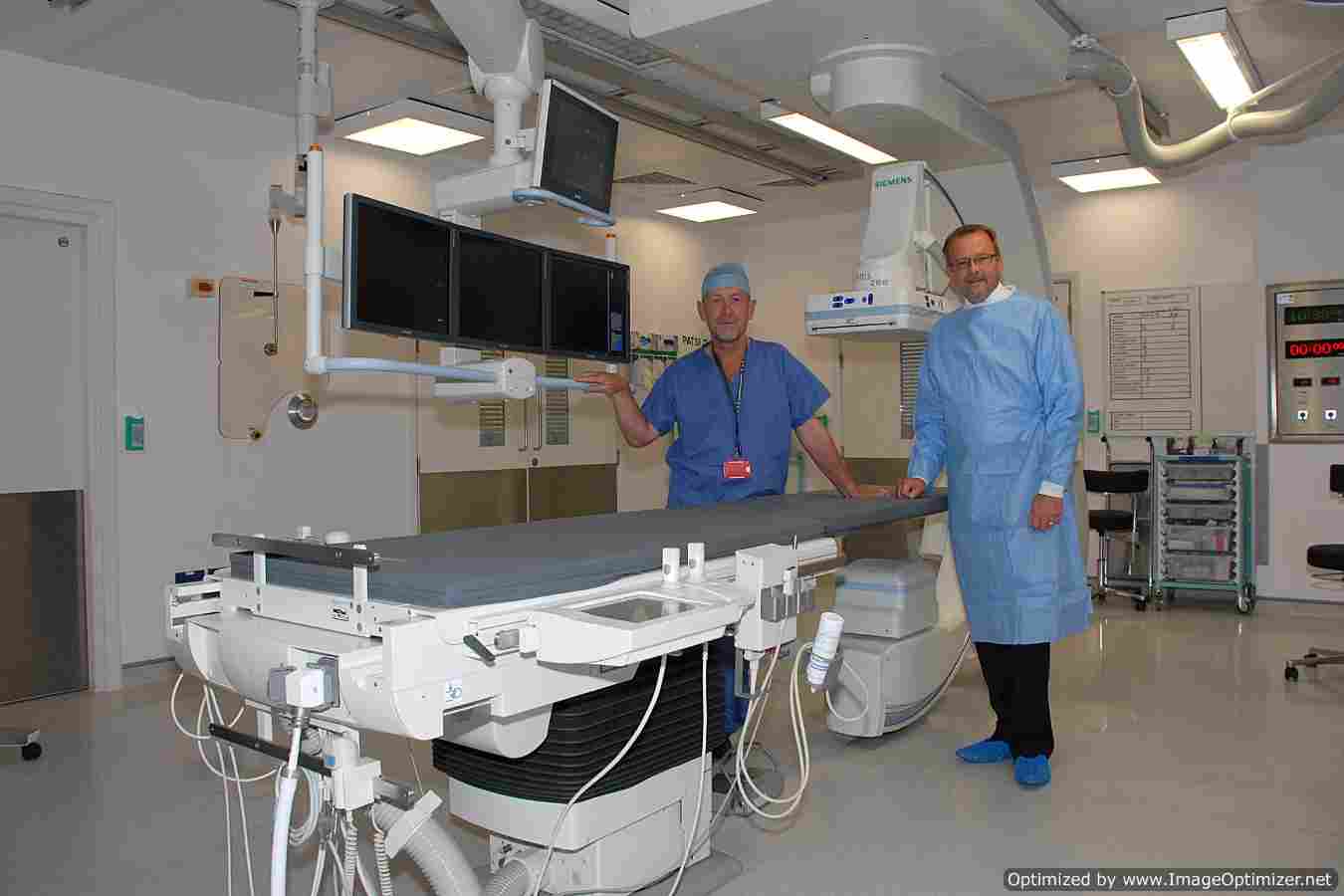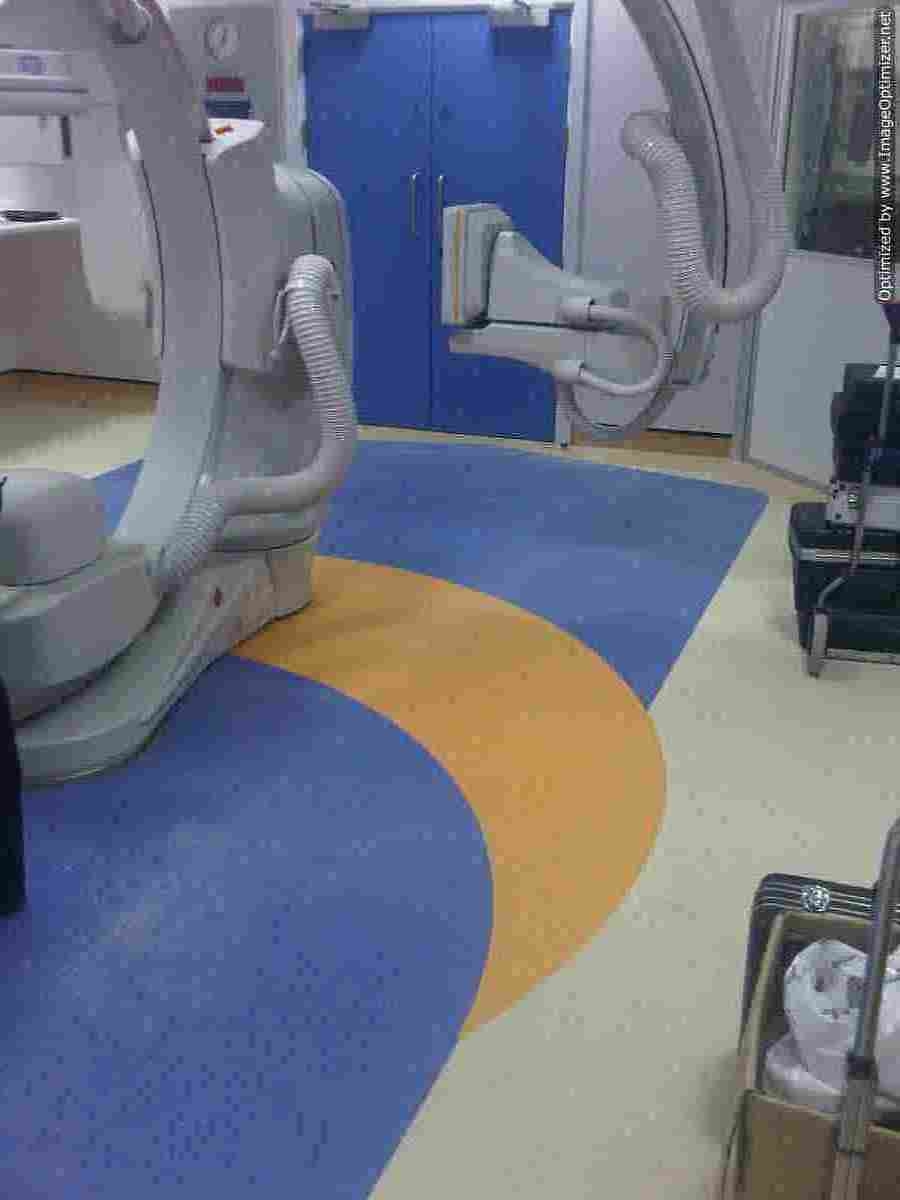OPERATING theatres are changing as technological advances expand the possibilities of what can be achieved within the sterile environment.
Increasingly, trusts are looking to hybrid and other specialised and/or integrated operating theatres to modernise and improve the treatment they provide for patients. However, for such theatres to work effectively, their design and processes need to be carefully planned.
From our experience, the most successful installations are the result of careful planning and strong communication between all stakeholders throughout the project
The hybrid operating theatre brings high-end imaging into what was previously the ’open’ surgery environment. In the past, access to imaging was often restricted to a mobile X-ray system that did not have the capacity to offer high-end continuous imaging and the advanced functionality of a static X-ray system. Where patients once had to be wheeled out of the sterile environment if X-rays were required during an operation, they now can be carried out without moving the patient. CT, MRI and ultrasound can also be used, not only for diagnosis but during the operation to help guide the surgeon’s hand.
It may seem obvious, but the real key to the successful design of a hybrid operating theatre is consultation. Integrating imaging equipment into the theatre also brings in a whole range of new stakeholders. This means consulting, not only with the surgeons who carry out the operations and the managers who wield the budgets, but also anaesthetists, nursing staff and radiologists – everyone who will use the space, according to Jane Whittaker, angiography business manager at systems manufacturer, Siemens Healthcare.
“These are complex projects with high-end equipment and interdisciplinary collaborations,” she says. “During some of these complex procedures, there can be an increased number of people working within this environment, as well as a wide range of equipment required for the procedure.
“From our experience, the most successful installations are the result of careful planning and strong communication between all stakeholders throughout the project.”
Siemens Healthcare has supplied imaging equipment to a range of operating theatres in the UK, including the Royal Free Hospital in north London, where it installed its Artis zeego, which, the company claims, is ‘the UK's first advanced interventional imaging system’. The system was installed to enable vascular surgeons and radiologists to carry out highly complex procedures such as vascular surgery for aortic aneurysms without the need for open chest or abdominal surgery. It uses a robotic multi-axis C-arm to provide users with maximum flexibility in the floor-mounted X-ray system.
“The Artis zeego will give us the image detail we need in one system, without having to transfer patients from X-ray to the interventional suite,” says George Hamilton, professor of vascular surgery at the Royal Free Hospital.
What imaging equipment is selected for use in the theatre is a key consideration, not only for its imaging capabilities, but also for how it impacts on the design of the operating theatre itself. This includes whether it is a single-plane or bi-plane system and whether it is ceiling or floor-mounted. A single-plane floor or ceiling-mounted system, for example, can fit in an operating theatre space of around 45-60sq m. An advanced system such as the Artis zeego, however, requires an operating theatre of at least 60sq m – and ideally 70sqm – says Whittaker.
The Artis zeego will give us the image detail we need in one system, without having to transfer patients from X-ray to the interventional suite
In addition, given the laminar air flow systems, operating lights and other equipment hanging from the ceiling, the ability to have a floor-mounted system without any compromise in system movement and flexibility is a major advantage.
The Royal Free has a floor-mounted Artis zeego system with a variable isocentre, allowing the height of the system to be adjusted to suit the height of the surgeon, which helps to reduce fatigue during long surgical procedures.
At Kent and Canterbury Hospital, where Siemens has also installed an interventional imaging system in the operating theatre - the Artis zee - the system needed to be ceiling-mounted to fit into the space.

Another hospital that recently revamped its theatres is Birmingham Children's Hospital. It has a number of new theatres that either have already been developed or are currently in development. A £1.6m modular theatre was installed last year to include both a general theatre and an endoscopy suite. A modular design was chosen because it was able to fit in the tight ‘landlocked’ space next to the surgical day unit. Next door, in the old theatre, a £4.9m hybrid suite is currently in development, due for completion in September, and a new laparoscopic theatre, costing £2m, is due for completion in February 2012.
“The key element was to get clinical engagement and user sign-up, as they know what they need,” says Neal James, head of capital development at the trust. The organisation made sure it took the time to get it right. The design process, from brief to business case completion, took about a year, with clinical leads playing a key role in project management, planning, design and at building site meetings.
“You need to develop clinical champions who can take ownership of the scheme and play an active role in the design,” James says.
In addition, the buy-in of stakeholders was essential for the redesign of operational processes which went hand-in-hand with the physical redesign. This included the implementation of lean theatre processes and the modernisation of stock control and storage.
You need to develop clinical champions who can take ownership of the scheme and play an active role in the design
The trust worked closely with Toshiba Medical and Horsley Huber Architects on the planning and design of the hybrid suite and linked up with Storz on the laparoscopic suite. 3D technology was used to make sure the design worked – for example ensuring that one set of pendants didn’t clash with others.
Jody Williams, Toshiba's commercial project manager, played a key role in the planning and design of the adjacent theatres.
“The theatres have been positioned so that surgeons in both rooms can see each other, so if they need to talk to each other, they can communicate between the two without stepping out of the theatre environment,” she explains.

A route around the back of the theatre, still within the sterile environment, enables them to move between rooms without having to change or re-scrub. In addition, the installation of lead-protected ‘smart glass’ technology means the view into the next theatre can be closed off at the flick of a switch if privacy is needed, protecting patient dignity.
Hand-swipe doors were also installed to allow staff to open and close them without touching in order to further reduce the risk of infection.
Another innovation was the demarcation of floors in bright colours to replicate the movement of the C-arm and the hybrid arm. This will allow staff to know where they can place equipment so that it will not clash with other equipment and so they know where they can safely stand if the system needs to move to the other end of the room.
Power towers were designed for both areas to enable electrical equipment to be plugged in so that cables are off the floor and out of the way. The towers were designed to fit not only imaging equipment, but also IT and other equipment – and incorporate both essential and non-essential power supplies.
The theatres have been positioned so that surgeons in both rooms can see each other, so if they need to talk to each other, they can communicate between the two without stepping out of the theatre environment
A state-of-the-art touch-screen surgeon's panel doubles as an alarm system for the room. James says surgeons are trained to use the panel to manage the room so that if something fails, they can go to the screen and either rectify the problem or notify the people who need to know. The system is a fully backed-up UPS solution and will last 40 minutes, bridging the gap from when the power goes off until it comes back on again.
One of the biggest challenges, says Williams, was getting the air conditioning right. While the full theatre was able to have a standard laminar flow system with curtain, in the hybrid theatre, the ceiling-mounted imaging system meant curtains were not possible. To get round this, Toshiba worked with Medical Air Technology, which has designed a system which will provide 80% effect of the laminar flow system without a curtain.
The selection of appropriate operating tables is another key consideration as they need to enable the radiology equipment to work if needed. Increasingly, operating tables are being developed which will work in this environment.
The successful planning and design of an operating theatre may take time – especially if it incorporates technologies such as those in hybrid theatres – but the time taken in the short term will pay dividends in the long term with a space that works for staff and patients now and into the future.

